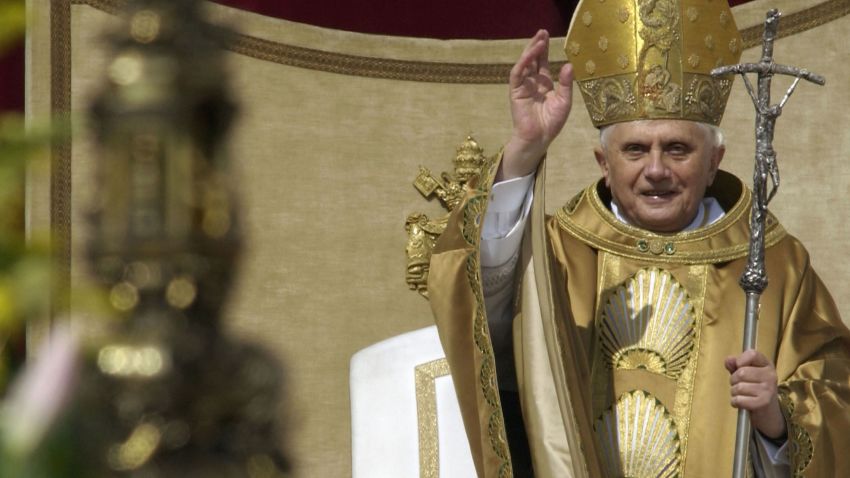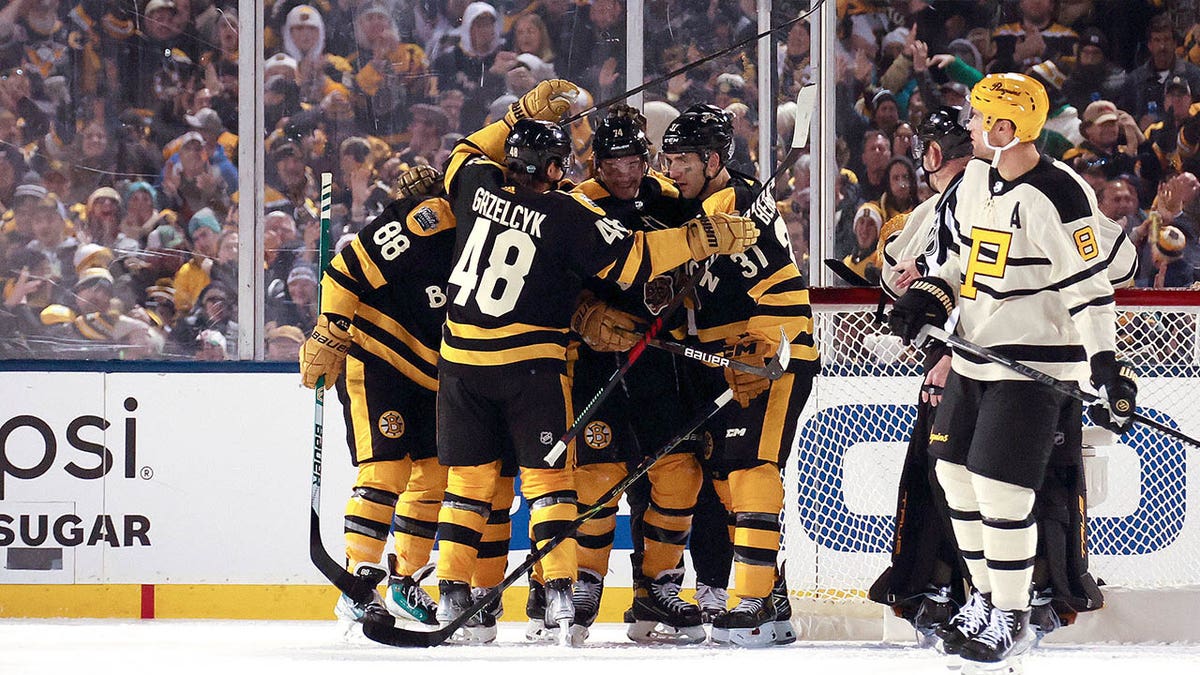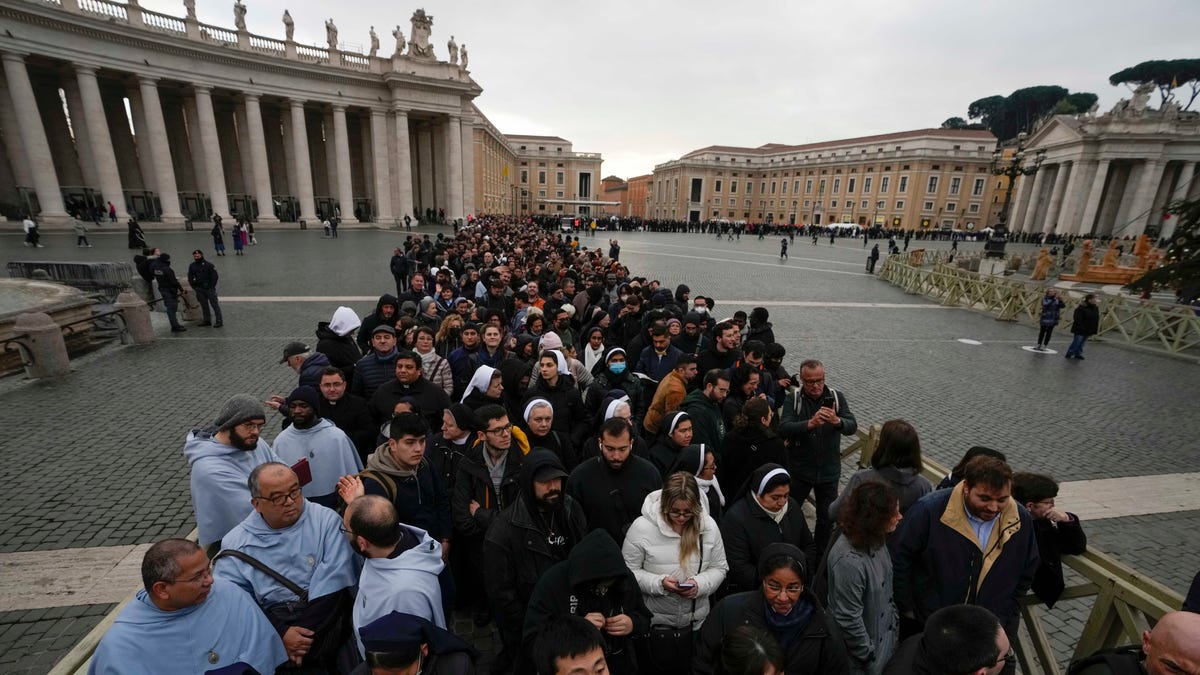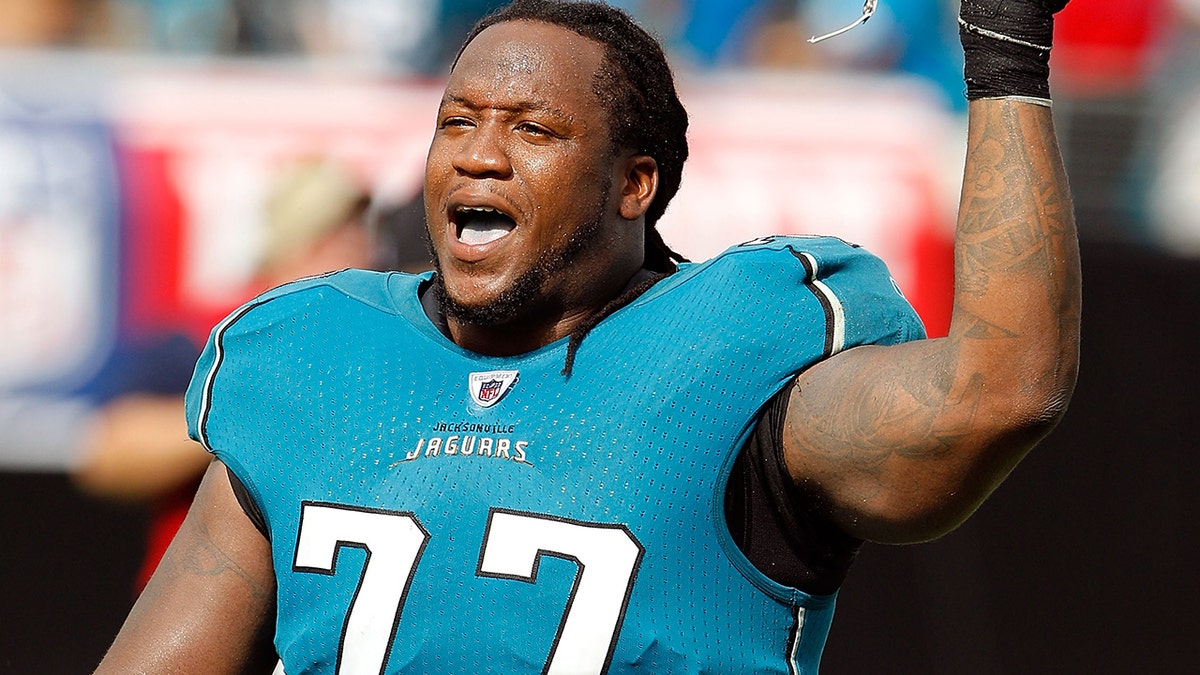US Top News and Analysis
Where did 2022 go so wrong and how can 2023 go right? I am constantly trying to show you how money managers work because — unlike almost everyone in “the business” — you can cherry-pick the parts that best suit your investing strategy. My goal for the Club has been simple and true: to replicate what I did as a successful money manager so you can do the same. You may have joined the Club to augment your knowledge. Maybe you wanted to be liberated from the dogma that says amateurs can’t invest on their own and should instead direct their money to the pros on Wall Street. Of course, I don’t want your money — although I am compensated by a television network that helps many make trading decisions. What I do want is to improve the inclination for regular folks to own individual stocks in addition to S & P 500 index funds. (Those funds, by the way, are faux passive in that they control what gets in and out of the vaunted index. That, plus lower fees, is why these options almost always beat the performance of active money managers.) I mention all of this because I passionately believe that you can beat the averages and chose when you want to pay taxes. This is exactly what I try to do for my own Charitable Trust, a trust that does not allow me to keep any realized income or dividends. Hopefully, you aren’t similarly restricted as it severely hurts overall performance. When I was running my hedge fund, which beat the S & P 500 for 14 years with an annual average of 24% after fees, I always sent an internal memo to the team that explained what I saw coming in the year ahead. This is that memo — but for the Club. How we got here The seeds of 2022, the worst year since 2008, were planted in November 2021 when the Federal Reserve decided to end its easy monetary policy and become far more restrictive. This decision and the Fed’s message were muddled by two things. First, the burst of the Covid omicron variant prompted the central bank to offer a less-harsh message to the markets. Second, the endless chatter about whether the Fed did too little or was too late (or both). Those kinds of arguments predominated and all they do is throw you off the scent. If you are managing your money, this kind of second-guessing is a waste of time. You must deal with the hand the Fed has given you. Why do you hear the fatuous chatter so often? Because it’s easy. All you need is an opinion. I don’t care one way or the other. I’m trying to make money. Omicron was a different matter. Public health is much tougher to divine. So many people I talk to are so critical of Fed Chairman Jerome Powell on this issue. It does not seem to matter that he got it far more right than Europe and China. Two of the main things we learned during 2022 was that China is not invincible and its dictatorship is both erratic and idiotic. Who turns down vaccines that work and save lives? Who chooses to doom the elderly? It’s important to recognize as we come out of 2022, we come out on top in the world. Our stock market comes out of 2022 better than any other. That’s the most important takeaway of 2022. Sticking to our doctrine The second big takeaway from 2022: If a company doesn’t make things and do stuff profitably, has a reasonable price-to-earnings ratio and returns capital to you in the form of dividends or buyback, it won’t work. Shares will go lower. That doctrine, which we started applying in late 2021, severely limited what could be owned — way more than I thought. It cordoned off so many profitless entities, everything from enterprise software and electric vehicle accoutrements to SPACs (special purpose acquisition companies) and anything crypto. Each has its disadvantages. Before the Fed pivot we measured enterprise software companies by the Rule of 40 — a shorthand formula invented by Fred Wilson, an old friend and chief investor and chairman of my old firm thestreet.com. It held that if your company is growing at a combined revenue growth and profit margin of 40% or greater, it’s a good investment. It didn’t matter how you reached that level. The company could be growing at 50% with a minus 10% profit margin, or at 30% with 10% profit margin. As long as it all added up to 40%, the company was golden. We used to do this stuff back in 1999, but we weren’t precise enough. The problem with that kind of analysis, which is really meant for venture capital investors and peaked before the dot-com bubble, is that there were too many companies that fit or almost fit the bill. The profitless companies today — like the dot-com stocks in 2000 — almost all disappointed and will continue to disappoint in 2023. That’s because they perform poorly in an inflationary environment and a tightening cycle that is ongoing. Our doctrine holds that money losers don’t belong in your portfolio. Our doctrine holds that the alternate version of greatness, the price-to-sales ratio, is of no value because we must now value companies by viability and growth. We can no longer assume that a company has time down the road to get to profitability. A shrinking universe of stocks What else does our doctrine eliminate? Many people asked me if the Trust would ever own crypto. The answer is no. Not only does it carry risk from being part of a fickle and (as we know now) rigged market, it also can’t be stored anywhere safe. There are hundreds of coins that have been made up, and they are all worthless and will be proven as such. SPACs are also ruled out. They have been revealed as a comical exercise in finding businesses that could never be bought public because they are so bad. The whole concept of the blank check is repugnant. You would never give anyone a blank check, would you? No, you’d never be that trusting or stupid. The doctrine also rules out any fad. Look at the stocks making new lows. I was walking through my town and saw an Amazon Rivian truck parked across the street. What a poster boy for the pivot: Rivian Automotive (RIVN) shares have fallen to $18 from $172. That’s simply 2000 all over again — the year of magical thinking and destruction. If you have anything like that in your portfolio, sell it. The markets are too disciplined now. I use Rivian as an example because Amazon is committed to buying anything they make, yet they are expected to lose money for a long time. This is not 2021, where the price-to-sales ratio seems cheap in the out years . It’s 2023 and who cares about the out years, we care about profit and Rivian can’t make it. Our discipline rules out pretty much every enterprise software company. There are just so many. It’s painful to look at them all. These were the darlings since 2010, which makes it harder to stop loving them. I am tempted to write that enterprise software is anything a regular person can’t understand. These companies are usually involved in making coding easy or obviating expensive workers. These can be good companies, but if they are profitless — and most are — I hate them. Mistakes made in 2022 Only enterprise software companies with CEOs that have actually bridged to profitability, not pledged to profitability already, are any good. That’s why we like cybersecurity company Palo Alto Networks (PANW) so much. CEO Nikesh Arora has gotten Palo Alto to that hallowed ground. We know this company can become extremely profitable on a generally accepted accounting principles (GAAP) basis, meaning how we judge companies in 2023, not non-GAAP adjusted nonsense as we did from 2010 to 2021. One of the mistakes we made was keeping Salesforce (CRM) in the portfolio. The market was unduly harsh to software companies with big cash flow but also high price-to-earnings ratios. We thought Salesforce would be immune from the stock dumpster because it is extremely profitable on a bunch of readings, especially operating cash flow. But its forward P/E of 27 was just too high for a market that appears to be favoring only stocks that are closer to the 17 P/E that the overall market clocks in for 2023 estimates. I was wedded to Salesforce when it was at $8 at the height of the Great Recession, only to be reminded that these are just pieces of paper and you can’t marry them. We also fell prey to the market’s newfound discipline with Nvidia (NVDA), a company with greatness but a stock with a high P/E of 44. It just didn’t matter how smart CEO Jensen Huang is, and he is the smartest CEO I have perhaps ever met. Like host Jeff Probst says to losers on the long-running “Survivor” reality show: “Sorry, I got nothing for you.” Brutal, just brutal. The odd thing, by the way, is that most venture capital companies are totally hung up on enterprise software, which is one of the real reasons they will find themselves in trouble in 2023. The market will not have an appetite for them. The venture capitalists, along with the private equity companies, have refused to recognize the pivot and would never adopt our doctrine. Unless they change their tune, it will cost them in 2023. The doctrine rules out all biotech companies — unless they make money. When the market lacked all discipline, the brokers flooded us with biotech. We just don’t seem to realize it because they are almost all going under. They don’t make things or do stuff at a profit, let alone all the other considerations. It rules out most Chinese stocks, which made up a big glob of initial public offerings in recent years. The Chinese government reserves the right to turn on or off profitability and even to buy stocks to get them higher. This is done mostly to suck in American capitalists, which deserve to be destroyed. Yet the brokers keep recommending them. That’s because, unknown to most, they pay the biggest fees and are the best source of IPO profit. Here’s what our discipline will wrestle with in 2023: financials. I am not talking about fintech, which will be overly regulated because of what happened to crypto. Also, because the traditional finance industry is trying so hard to destroy fintech — and will, by the way, succeed this year. Any way to untraditionally bank or give loans should fall by the wayside in 2023. But the “do stuff” part of our discipline will be challenged by the ability of banks to continue to thrive in a high-interest-rate environment where their own investments could be questioned. The Federal Deposit Insurance Corporation (FDIC) reports how much banks are underwater in unrealized investments and it is about $700 billion; way too high for my taste. We haven’t and don’t like any fintech and most banks, but have allowed ourselves to own Morgan Stanley (MS), which doesn’t have a problem, and Wells Fargo (WFC), which will benefit from reduced regulation. But we screwed up by not selling WFC much higher, thinking that its multiple was still too low. Something to watch this year. So all told, the bad news is our doctrine blocks more than half of the market. Maybe even more. 5 predictions for the first half of 2023 The good news is that we have a winning formula as demonstrated by our winners. So, with the admittedly detailed look at how we got here, what awaits us? Let’s talk about five factors. You might call them predictions, but I consider them our worldview that will inform us in the first six months of 2023. This is our usual timeframe for making stock decisions. 1. The Fed won’t make small rate hikes until it sees wage declines. Not wage stabilization, it’s too high, but actual declines. That can’t happen until there are meaningful layoffs. I have talked about this before. Understand, though, the depth of this criteria. We have all sorts of indicators for inflation like the producer price index and the consumer price index. In 2023, they will be distractions. We care about unemployment going higher, toward 4% or above, and aggressive, permanent layoffs, like the ones that stem from large-scale bankruptcies. Other than fraudulent ventures, such as Sam Bankman-Fried’s crypto firm FTX, we simply haven’t had any. Lots of people talk about the larger number of new cars and the lowering of car prices, or the glut of apartments and the potential collapse of rents, or even the year-over-year decline of housing prices. I have come to believe that those are of zero interest to the Fed. They are all creatures of a tight labor market and the tremendous savings of Americans — roughly $1 trillion today from about $2 trillion two years ago. Credit card debt and defaults are indeed rising, and that’s something that’s worrying the worrying class. But that’s not a factor beyond the usual borrowing woes. It won’t impact the banking system in 2023, which is too strong to be strung by those defaults. Friday’s jobs number can tell the tale. Once again, I emphasize that it’s not wage stabilization we are looking at, but wage declines. We have just lost so many workers at once, particularly the over 60 class, to Covid or a reassessment of life post-pandemic that we just don’t have enough to fill jobs. I had thought these people would come back to work when they realized that savings from the stock market and Social Security aren’t enough of a safety net. But I no longer believe that will change. We also have a paucity of lower-end workers, the result of tougher immigration laws, something I don’t see changing either. That leaves large-scale bankruptcies. Just decisions to freeze hiring aren’t enough. There are still not enough workers (white collar or blue collar) out there to reduce wages. And until there are, we will see more Fed tightenings, not at the same pace simply because that would take us to 6% in the blink of an eye. The federal funds rate can get to 5%, from current target range of 4.25 to 4.5%, on the low end after we see the closures and bankruptcies. The 2-year Treasury at 4.4% influences my thinking of a rate not much higher, or that predictive gauge would be at 5% now. Until we get to that level of joblessness, we will be chary with our capital. We will hold a higher rate of cash of roughly 10%, which means selling something to buy something, our usual defensive posture. 2. We don’t need new stock. Unlike so many in the industry who lament the lack of issuance of common stock, I think it’s fantastic. There are so few good private companies that haven’t already come public that we don’t need new shares. It just makes stock-picking harder. We want a limited and better selection, and the IPOs just get in the way. Plus the Federal Trade Commission and Justice Department are both inclined to block mergers. If you read the ruling that blocked Penguin Random House from buying Simon & Schuster, it’s clear the Justice Department has a winning hand in blocking even the least potent combination. And forget the FTC. Lina Khan, the head of the FTC, is an old-fashioned redistributionist who wants to block everything because she thinks all combinations are bad. Her thinking may not survive any rigorous view of antitrust if a company like Kroger (KR) wants to go to court. But that’s not the way of most corporate America, despite the endless pushing by greedy bankers and lawyers who don’t have enough work to do to maintain their admittedly lavish lifestyles versus pretty much the rest of the country’s work force. That’s factual, not judgmental and is important because we don’t want to lose money speculating on the closure of a Microsoft-ActivisionBlizzard deal. Despite the small tax on buybacks, companies will remain aggressive buyers of their own shares because they think they are cheap. The good news here is two-fold: We will have better earnings per share than most prognosticators think, even if we have a pretty bad slowdown; and the discipline of the market — our doctrine — makes it easier to ferret out winners from losers. The “don’t own” part of our mantra make things easy for us as it usually includes companies that endlessly issue stock because of compensation. They got away with that too long. It’s over. 3. Bonds are more attractive than stocks. This is distinctively negative: The Fed will keep taking rates up to where CDs or Treasurys are more compelling than most stocks. Money will be exiting the stock market all year into the safer and somewhat greener pastures. I can blame no one reading this who doubts the ownership of a large chunk of stock. I don’t think you can go wrong with owning a 2-year piece of paper that will allow you to make the current federal funds rate without risk versus owning stocks that may be weighed down by our rigorous criteria of picking winners. There are a lot more losers out there, including expensive companies in the S & P 500 — expensive on earnings estimates in a slowdown, which is the likely scenario. Trust me, the Fed will win, but at a cost that most will find less than compelling for most stocks in the 2000 some odd equities that define a broader class than the S & P 500. That trust has heavily influenced our decision to stay invested in oils that will most likely continue to pay high dividends as long as oil remains above $70, even as their earnings may not be high enough to avoid estimate cuts. That’s what their P/Es of 6 to 9 tell us. We’ve never had any oil companies with discipline before, so we don’t know what it will be like. It is entirely possible that the world will slow to the point that oil goes down to $60 but that would include no resurgence in China in 2023, unlikely because of enforced herd immunity and an end to the war in Ukraine, which is a total wild card. Suffice it to say I think oil remains high enough to maintain these dividends. But our conviction is being tested pretty regularly, especially with natural gas in essential free fall. 4. Companies with pricing power will win. In a deflationary environment that the Fed is furiously engineering, does a company have the ability to pass some of its costs on to consumers. Optimal situation: drug stocks, which have no economic sensitivity and can keep raising prices with impunity as our current president and his regime seem not focused on this activity. Nadir situation: the entire class of 2020-2021, which were companies based on low interest rates and initially a lack of competition until competition became endless and first-mover advantage became nil. 5. Look for benefactors of Washington’s spending. Who benefits from the federal infrastructure money coming, the result of a total lack of discipline by both Congress and the Biden administration? In the work I have done, I recognize that virtually none of this money has gone anywhere as Washington is still writing criteria. But the stock market is going to anticipate that this money is going to go to the states this year and they will refine their rules and begin to reward contractors by the end of the year. I can’t see anything started, let alone built, in 2023. But the companies in the chain that will be building need equipment to meet infrastructure demand. These are reasons why I remain attracted to companies like Nucor (NUE), Deere (DE) and Caterpillar (CAT), which are all winners in an infrastructure-driven economy. The spending in Congress has made it difficult for the Fed to rein in growth, but its bond selling and fed-rate increases are more than up to do the job. Some trimming left to do Now, the tough part. We know what went wrong in 2022. We know what to look for in 2023. Where does that leave us? Unfortunately, we still have culling to do. Can we justify owning Amazon (AMZN), Apple (AAPL), Alphabet (GOOGL), Meta (META), Microsoft (MSFT) and Nvidia (NVDA)? No. I think Apple could pre-announce disappointing earnings, something I have stressed to you endlessly. But the stock has come down to $129 from $182 and that decline is in line with probably three-quarters of the losses that Apple’s stock could have. Own it, don’t trade it as demand is greater than supply. Alphabet trades at 18 times earnings and the earnings are real, but based on a stabilization of advertising. That can’t happen until the slowdown ends. Call me concerned, as this must be the year that Alphabet has discipline over earnings and hiring, something it didn’t care enough about in 2022 despite its protestations. Amazon is a mess and defines a stock we would normally sell. But I have faith that CEO Andy Jassy will take the tough action that rationalizes its workforce and cuts spending. We have been basing an awful lot on that happening. If they aren’t disciplined, we will have to be. Meta is telling. The P/E is expected to increase this year because of a decline in earnings. So far, the metaverse has been a bust, no economic value whatsoever. It’s a small position, but one kept because I struggle to believe that founder and CEO Mark Zuckerberg could be this oblivious to what’s happening. His inability to buy anything — the Feds are even blocking a tiny exercise option for Meta users — is trapping him into growing by shrinking. Take WhatsApp public for a valuation of $100 billion. Or stopping Meta bleeding or allow us to work without headsets. It’s difficult to sell if something doesn’t happen in the next five months. Oddly, Microsoft is the most comfortable of the list simply because it is the best run and most likely to beat estimates. That’s what allows us to keep it. You might see some profitless young companies beat sales estimates or reach small Non-GAAP profitability, but that won’t mean much in 2023. Managers will be drawn to the one large-cap stock that can fulfill old goals. That said, it’s a scale-out as it gets closer to $300, given the fact it defies our doctrine. Nvidia is the one I am most concerned about. What if the federal government decides its most complex chips can’t be sold anywhere outside the U.S. because they could end up in the hands of the Chinese? This one keeps me up at night and I sleep so little I can’t have that happen. Most of the rest of the portfolio fits the doctrinal analysis laid out earlier. Yes, Bausch (BHC) must be dealt with. I know it has options, but I am still waiting for a call back, something that better happen in 2023 although I think the ability to continue to bill for Xifaxin, it’s most important drug, may make it a mistake to sell down here. I don’t think we have enough aerospace, which is in secular growth mode because of a lack of new aircraft. I fear Boeing (BA) and its management team and prefer Raytheon Technologies (RTX), which also has a great defense portfolio. I don’t think we have enough agricultural names, which is still too in bull market mode as 13% of the world’s grain has been taken off the market because of the Russians. Deere, which also has infrastructure, can change that. In light of what I said, we need more infrastructure, which draws me to the 4 times earnings Nucor. I’m confident that’s a pretty ridiculous P/E. How do we get there, how do we buy these new stocks if we don’t want to put that much more money to work? By selling tech, which is still too big in the portfolio. Lots of people ask me where the markets will finish at the end of the year. That’s a parlor game not worth playing. Suffice it to say, we just don’t know until we see the whites of the Fed’s eyes. That involves the layoffs I described as commodity inflation is already going in the right direction. If we know when wages would fall then we know that we can be more aggressive now. We don’t, so why do so? I will save commentary about individual stocks for our next Club meeting this month. Sorry for going on too long, but I always used to go long for my hedge fund — at least when I had my best performances. Let’s hope the same for the new year! (See here for a full list of the stocks in Jim Cramer’s Charitable Trust is long.) As a subscriber to the CNBC Investing Club with Jim Cramer, you will receive a trade alert before Jim makes a trade. Jim waits 45 minutes after sending a trade alert before buying or selling a stock in his charitable trust’s portfolio. If Jim has talked about a stock on CNBC TV, he waits 72 hours after issuing the trade alert before executing the trade. THE ABOVE INVESTING CLUB INFORMATION IS SUBJECT TO OUR TERMS AND CONDITIONS AND PRIVACY POLICY , TOGETHER WITH OUR DISCLAIMER . NO FIDUCIARY OBLIGATION OR DUTY EXISTS, OR IS CREATED, BY VIRTUE OF YOUR RECEIPT OF ANY INFORMATION PROVIDED IN CONNECTION WITH THE INVESTING CLUB. NO SPECIFIC OUTCOME OR PROFIT IS GUARANTEED.
Where did 2022 go so wrong and how can 2023 go right?
I am constantly trying to show you how money managers work because — unlike almost everyone in “the business” — you can cherry-pick the parts that best suit your investing strategy. My goal for the Club has been simple and true: to replicate what I did as a successful money manager so you can do the same.













